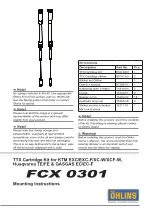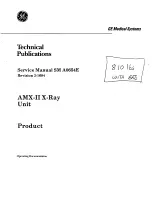
SoundSystem DMX 6fire (English)
27
The connections and their uses.
Now that you have successfully installed your new sound card, we come to the most
important part—connecting external devices and configuring the software.
Safety note.
When connecting analog devices, ensure that the power is off to
protect your speakers and your hearing from sudden peaks. For
digital devices, be sure to at least reduce the volume of your
playback equipment.
Overview.
The SoundSystem DMX 6fire offers a wealth of connection options on both the PCI card and
the extension modules. We would like to introduce them to you briefly below:
Internally—CD Audio, AUX and TTL.
The PC board of the DMX 6fire features three plug
connectors for analog connections to CD-ROM drives (CD1 and CD2), or other cards such as TV
or video expansion modules (AUX). The required cables and plugs are standardized and are
generally included with branded products.
An internal digital input is also available. An external S/PDIF signal with a so-called TTL level
(+5 V), as provided by most CD-ROM drives, can be applied to the connector marked CN11.
The analog CD-ROM connections are electrically independent (decoupled) and can be used
simultaneously. The DMX ControlPanel software represents both CD signals as a single
source, however.
From the rear—6 out, 2 in.
Four sockets reside on the golden slot plate of your SoundSystem,
each waiting for a 3.5 mm stereo mini-jack. The first three (green; F, R, C/W) are the outputs
for six independent audio channels and are designed for use with a suitable (surround)
amplifier or an active speaker system. Naturally, a mixer can also be connected to these
outputs for studio applications.
The outputs are laid out in the format that you probably already know from 5.1 hifi
applications:
F
for the two front speakers (Front, Left and Right)
R
for the two rear speakers (Rear, Left and Right)
C/W for the center speaker (mono) and the subwoofer signal, the so-called LFE channel
(also mono). The left channel hereof is the Center signal (usually a white or black plug on the
cable).
















































